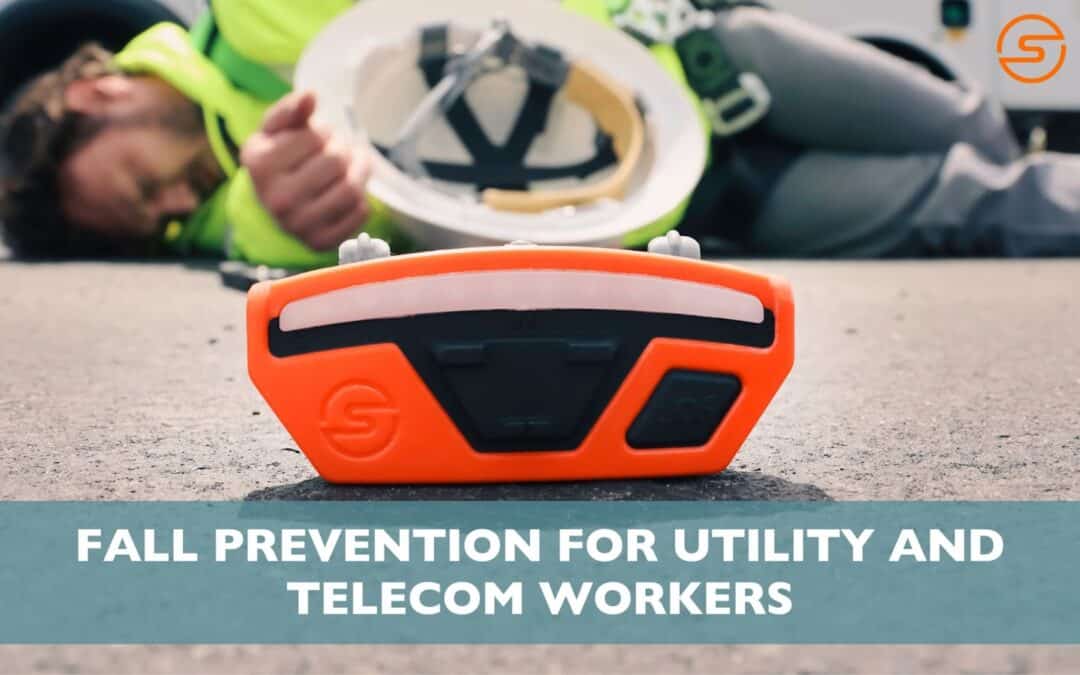Falls and fall-related injuries are unfortunately common for utility workers and telecom workers. These workers are frequently required to climb ladders, poles, and towers to install, maintain, or repair equipment. Depending on the equipment needing attention, utility and telecom workers can work at varying heights. For example, a lineman may work at heights of up to 100 feet or more to repair or install power lines, while a tower technician may work at heights of up to 500 feet to install or maintain telecom equipment.
According to the Occupational Safety and Health Administration (OSHA), falls are one of the leading causes of fatalities in the workplace. Because of this, OSHA requires employers to provide fall protection to workers who work at heights of four feet or more (note: there are varying requirements, depending upon the industry). For utility and telecom workers, proper fall protection equipment is critical.
Fall Protection Equipment
Several types of fall protection equipment are available for utility and telecom workers. The most commonly used include harnesses, lanyards, anchors, and lifelines. These pieces of equipment work together to provide a comprehensive fall protection system.
Harnesses are the foundation of a fall protection system. Harnesses are usually made of nylon or polyester straps that connect to form a belt or web that creates (usually) a five-point structure that the worker wears around his waist, legs, back, and shoulders. Harnesses can be designed differently, depending on how the worker needs to maneuver to perform a task. The harness has D-rings that allow the worker to connect the harness to a lanyard, which is then attached to a stationary object, such as a pole or tower. The purpose of the harness is to arrest a fall without exerting too much pressure on a particular part of the body – the harness allows the force of the fall to be distributed across the whole torso.
Lanyards connect the harness to an anchor point, usually with carabiners. Lanyards are typically made of synthetic fibers and come in different lengths and styles. Some lanyards are shock-absorbing, which means they can stretch to reduce the impact of a fall. Other lanyards are self-retracting, which means they can automatically adjust to the worker’s movements and keep the slack to a minimum.
Anchors are the attachment points for the lanyards. They are typically fixed to the structure or surface where the worker is working. Anchors come in different types, and the choice of anchor depends on the kind of work and the structure being worked on. Utility and telecom poles and towers, as well as bucket trucks, all have anchors.
Lifelines are often used to provide continuous protection for workers who need to move around on a structure or surface. For example, you can set up a horizontal lifeline along a roof line. The lifeline is a very strong cable attached at two fixed points. The worker hooks a short lanyard to his harness and to the lifeline. This allows the worker to move freely horizontally across the roof, with the lanyard sliding along the lifeline. If he falls, the worker will never fall further than the distance of his lanyard to the lifeline. A vertical lifeline works similarly but is attached at one fixed point overhead. This allows the worker to move around freely within the range of the slack lanyard. Lifelines are usually made of steel cable. OSHA requires them to be able to withstand a minimum dead weight of 5400 pounds, allowing multiple workers to be attached to the same lifeline.
In addition to the above equipment, other fall protection devices, such as guardrails and safety nets, can also be used depending on the situation.
All of these fall protection devices are only effective when used correctly and consistently. Consequently, in addition to providing adequate fall protection equipment, utility and telecom companies are responsible for ensuring that workers are trained in recognizing fall hazards and using the correct fall protection equipment for the situation. Further, workers must regularly inspect this equipment for wear, tear, and defects. When necessary, it must be repaired or replaced.
The COMPASS Pro: Emergency Response Solution
Falls and fall-related injuries are unfortunately not uncommon for utility workers and telecom personnel, and even for arborists, roofers, and anyone else whose jobs require working at heights. Even with the best fall protection equipment and training, falls still occur. This happens not because workers are heedless or reckless but because of the nature of the environment and situations in which they work. There is not always the time or ability to observe all fall protection protocols. Further, falls often occur because a worker has suffered a primary injury, such as an electric shock or experiencing an arc flash.
While fall protection equipment has been instrumental and necessary in reducing the number of fall injuries to utility and telecom workers, they often result in severe injuries when a fall does occur.
For these and other reasons, Safeguard Equipment® has added an emergency response feature to its COMPASS line of personal voltage detectors (PVDs). The new COMPASS ProTM has added injury detection capabilities – specifically, the PVD device can now detect falls, arc flashes, head impacts, and man-down. When linked to the user’s smartphone through the Safeguard app, the device will send an alert to a designated in-house safety team whenever the unit detects one of these injury events. Because the app automatically initiates a communication link and enables geo-location for the smartphone, safety response teams can get help to workers in record time.
For more information about COMPASS PVDs and a demonstration of our COMPASS Pro emergency response solution for falls and other injuries, contact Safeguard Equipment today.
Views: 41

